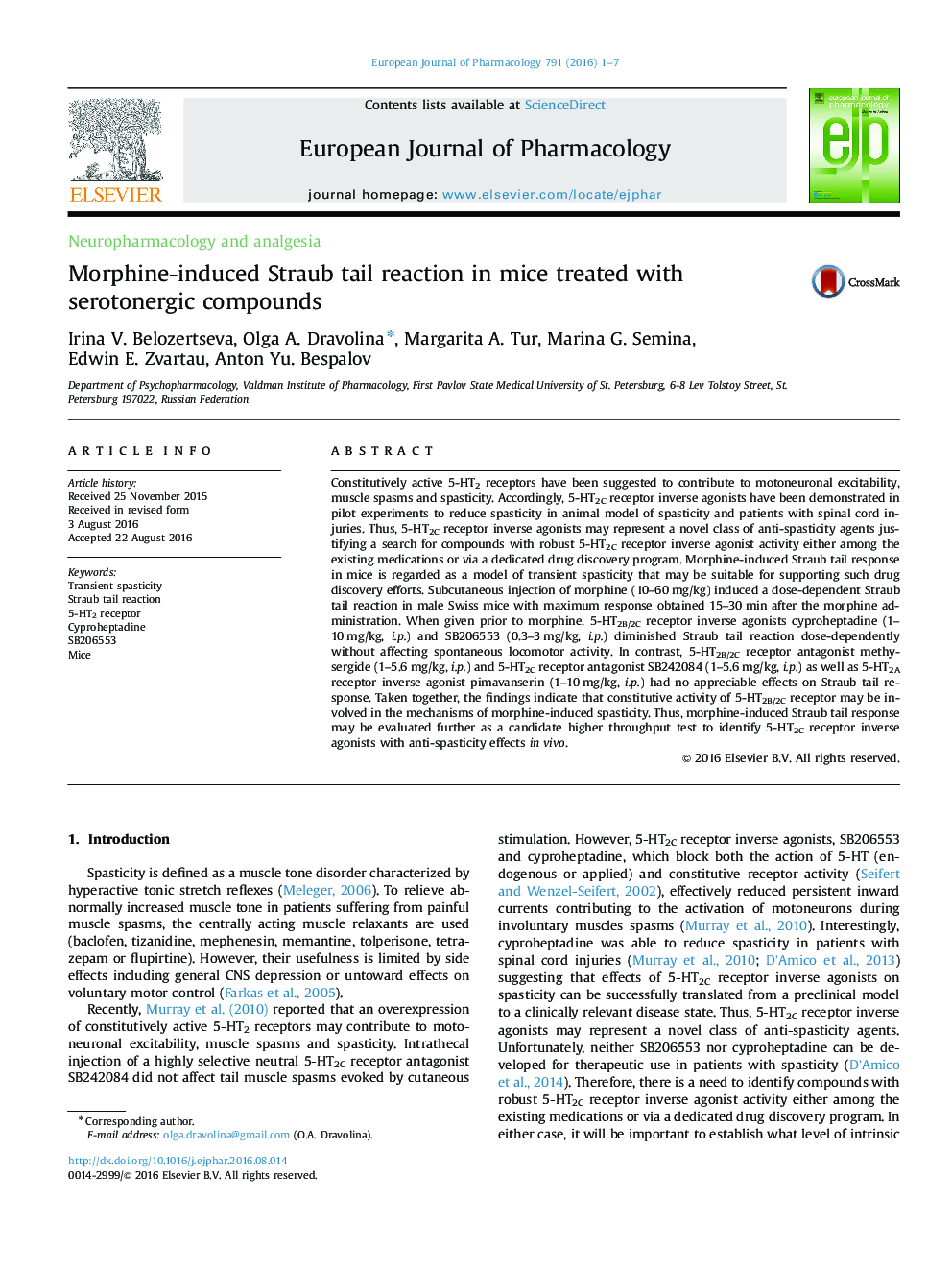| Article ID | Journal | Published Year | Pages | File Type |
|---|---|---|---|---|
| 2530788 | European Journal of Pharmacology | 2016 | 7 Pages |
Constitutively active 5-HT2 receptors have been suggested to contribute to motoneuronal excitability, muscle spasms and spasticity. Accordingly, 5-HT2C receptor inverse agonists have been demonstrated in pilot experiments to reduce spasticity in animal model of spasticity and patients with spinal cord injuries. Thus, 5-HT2C receptor inverse agonists may represent a novel class of anti-spasticity agents justifying a search for compounds with robust 5-HT2C receptor inverse agonist activity either among the existing medications or via a dedicated drug discovery program. Morphine-induced Straub tail response in mice is regarded as a model of transient spasticity that may be suitable for supporting such drug discovery efforts. Subcutaneous injection of morphine (10–60 mg/kg) induced a dose-dependent Straub tail reaction in male Swiss mice with maximum response obtained 15–30 min after the morphine administration. When given prior to morphine, 5-HT2B/2C receptor inverse agonists cyproheptadine (1–10 mg/kg, i.p.) and SB206553 (0.3–3 mg/kg, i.p.) diminished Straub tail reaction dose-dependently without affecting spontaneous locomotor activity. In contrast, 5-HT2B/2C receptor antagonist methysergide (1–5.6 mg/kg, i.p.) and 5-HT2C receptor antagonist SB242084 (1–5.6 mg/kg, i.p.) as well as 5-HT2A receptor inverse agonist pimavanserin (1–10 mg/kg, i.p.) had no appreciable effects on Straub tail response. Taken together, the findings indicate that constitutive activity of 5-HT2B/2C receptor may be involved in the mechanisms of morphine-induced spasticity. Thus, morphine-induced Straub tail response may be evaluated further as a candidate higher throughput test to identify 5-HT2C receptor inverse agonists with anti-spasticity effects in vivo.
